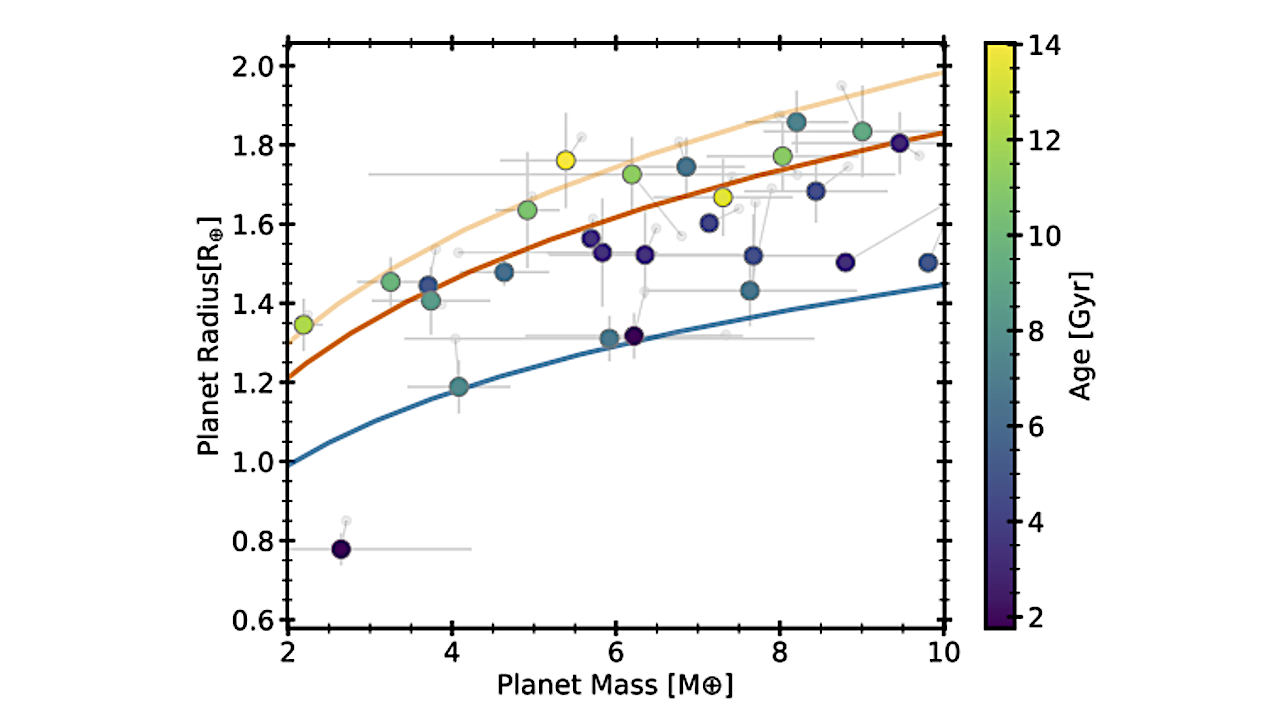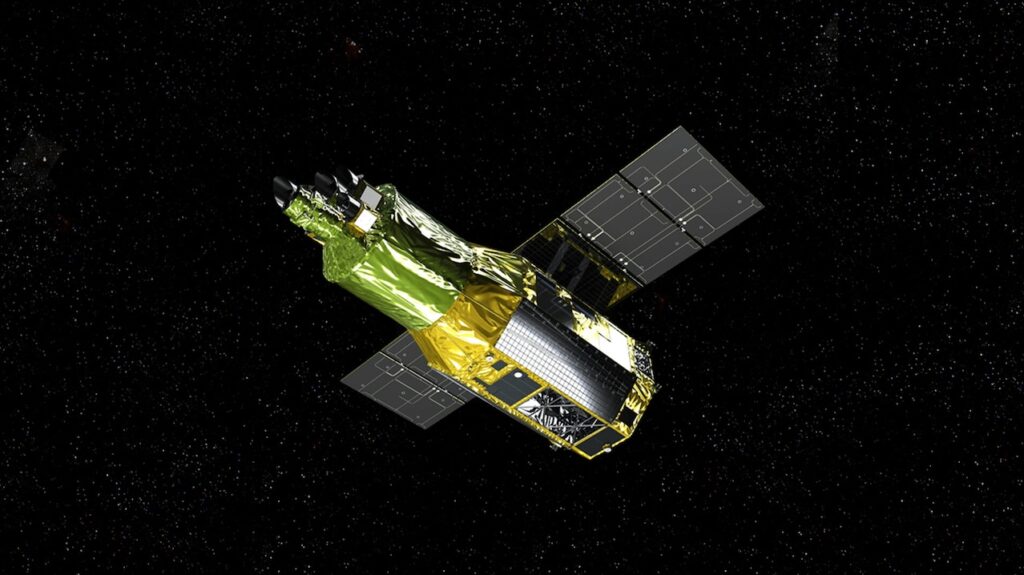A Link Between Rocky Exoplanet Composition And Stellar Age

Interior compositions are key for our understanding of Earth-like exoplanets. The composition of the core can influence the presence of a magnetic dynamo and the strength of gravity on the planetary surface, both of which heavily impact thermal and possible biological processes and thus the habitability for life and its evolution on the planet.
However, detailed measurements of the planetary interiors are extremely challenging for small exoplanets, and existing data suggest a wide diversity in planet compositions. Hitherto, only certain photospheric chemical abundances of the host stars have been considered as tracers to explain the diversity of exoplanet compositions.
Here we present a homogeneous analysis of stars hosting rocky exoplanets, with ages between 2 and 14 Gyr, revealing a correlation between rocky exoplanet compositions and the ages of the planetary systems. Denser rocky planets are found around younger stars. This suggests that the compositional diversity of rocky exoplanets can be linked to the ages of their host stars.
We interpret this to be a result of chemical evolution of stars in the Milky Way, which modifies the material out of which stars and planets form. The results imply that rocky planets which form today, at similar galactocentric radii, may have different formation conditions, and thus different properties than planets which formed several billion years ago, such as the Earth.
Angharad Weeks, Vincent Van Eylen, Daniel Huber, Daisuke Kawata, Amalie Stokholm, Victor Aguirre Børsen-Koch, Paola Pinilla, Jakob Lysgaard Rørsted, Mark Lykke Winther, Travis Berger
Subjects: Earth and Planetary Astrophysics (astro-ph.EP); Solar and Stellar Astrophysics (astro-ph.SR)
Cite as: arXiv:2411.17358 [astro-ph.EP] (or arXiv:2411.17358v1 [astro-ph.EP] for this version)
https://doi.org/10.48550/arXiv.2411.17358
Focus to learn more
Submission history
From: Angharad Weeks
[v1] Tue, 26 Nov 2024 12:01:22 UTC (1,047 KB)
https://arxiv.org/abs/2411.17358
Astrobiology,








